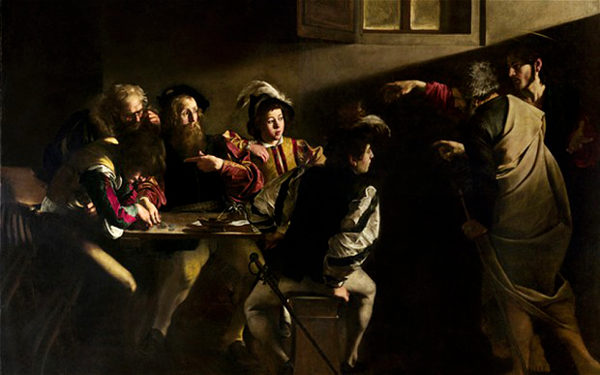|
.:: Ubi's Rome ::.
made in UbiLand |
|
|
Caravaggio Michelangelo Merisi da Caravaggio, universally known as "Caravaggio", is the first master of the chiaroscuro technique in painting that left a significant mark in the baroque art. It was then adopted by a number of followers but most of them could not reach match the skill of the Italian painter. He was born in Milan in 1571, yet his most famous works are kept in the capital where he operated for the Vatican commitents. It is known, though, that his choices were not often dictated by his free will: his violent personality often exploded and the worst incident happened in 1606, when he killed a man during a scuffle. Since then, he was practically a fugitive because he was sentenced to death; he had to flee from Rome where he left his most valuable production. His apprenticeship took place in Milan and maybe Venice and in 1599 he gained some important commissions thanks to the cardinal Francesco Maria del Monte for three big paintings on canvas, including "The Calling Of St. Matthew", where the light coming from one side make people shine out of the dark background. The scene is still among his better-known for the novelty of the strong contrast and, of course, the general quality of the portraits.  The calling of Saint Matthew by Caravaggio But soon the bahaviour of Caravaggio revealed his troublesome nature; the first serious episode happened when he assaulted a nobleman (Girolamo Stampa da Montepulciano) but he was later arrested more than once not just for his violence but also for the noise produced by him and other people of his entourage. After the incident of 1606, he was active in Naples, Malta, Sicily (in Syracuse), etc., he died in 1610, rather young. Among his masterpieces, apart from the aformentioned "The Calling Of St. Matthew", a minimal list should include the "Basket of Fruit", which is placed in the Biblioteca Ambrosiana (Ambrosian Library), Milan. The picture delivers a subtle allegory of decadence, through the presence of insects on fruits which are almost-rotten. "Judith Beheading Holofernes" is kept in Rome. Another painting of relevance, "Amor vincit omnia" (Love wins over everything) is in Berlin, while "Boy with a Basket of Fruit" is, again, in Rome; they both are considered one of the many evidences of the presumed homosexuality of Caravaggio who was also hit by acccusations that could ruin his life. "The Entombment of Christ" and "Conversion on the Way to Damascus" are two more but far from exhausting the examples of his relevance in the history of Art. |
|
